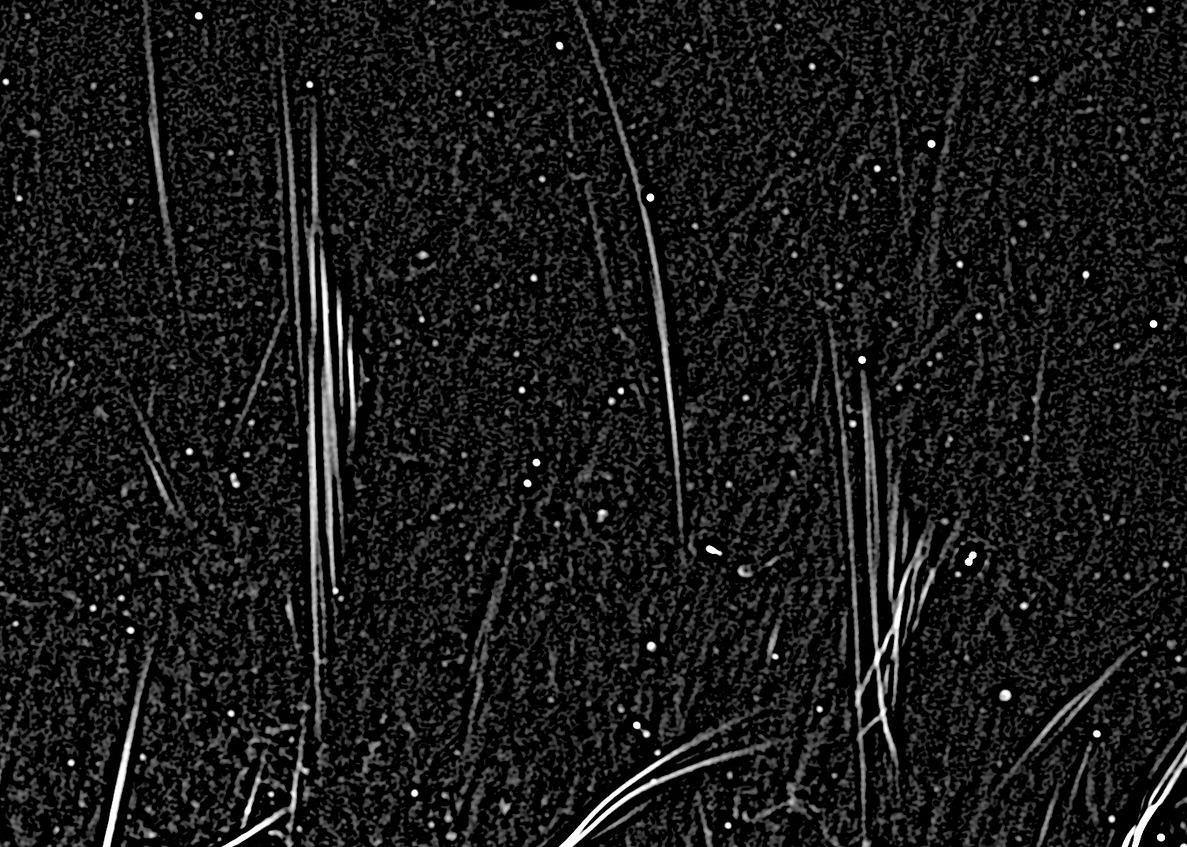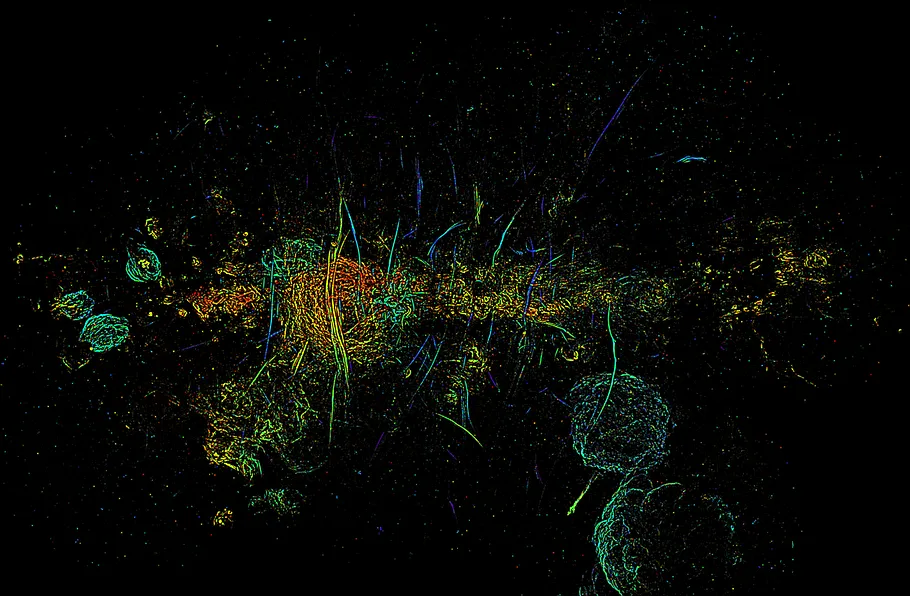
Heartstrings of the Galaxy
The South African Radio Astronomy Observatory spent three years pointing the MeerKAT radio telescope at the core of our galaxy.
The result is a disarming, gorgeous mosaic image of the heart of the Milky Way:

Most of the stars in the Milky Way lie along a flat plane. You can see this plane running horizontally through the mosaic above. According to the South African Radio Astronomy Observatory press release on the image, the colorful Rorschach blobs represent various phenomena, including “supernova remnants,” “stellar nurseries,” and a “chaotic region” that surrounds the black sucking heart of the galaxy.
This latter description is not a metaphor. Astronomers believe the center of the Milky Way is a supermassive black hole. We call the region and the black hole Sagittarius A* (Sagittarius A-Star). The object is 25,000 light years from our Solar System. The “supermassive” tag is well earned: its mass is 4 million times bigger than that of the Sun. No wonder the region around it is chaotic!
The information from this image will feed astrophysicists for years to come.


The physical constituents of the galaxy’s core are fascinating, but they almost pale compared to the arresting beauty of the mosaic. It’s the equivalent of mountain photography on a cosmic scale.
Supernovae, pulsars, and chaos are intriguing, but they’re all expected to be in an image such as this one. Lurking in the mosaic is something far less familiar to scientists.

What are these wispy strings that look like galactic lightning?
In the 1980s, an astronomer from Northwestern University discovered the existence of these bizarre filaments. We know they are magnetic and comprised of cosmic ray electrons, but the origin is a conundrum. The great surprise of the new mosaic was the sheer number of the strings. Thousands of them line the inner core of the galaxy.
Some of the filaments stretch over 150 light-years. For reference, the distance from the Sun to Earth is 8 light-minutes; the radius of the Solar System, as defined by the gravitational pull of our star, is about 2 light-years; the distance from the Sun to the nearest star, Proxima Centauri, is a bit more than 4 light-years. These radio filaments are extraordinarily long.
And we have no idea what they are.

The new mosaic revealed at least 10 times the number of filaments populate the inner part of the Milky Way than previously estimated. The oddest part is they seem to be organized. As you can see in the image above, some of the strings cluster; some seem to be evenly spaced. Northwestern astronomers described some of them as “strings on a harp.”
The data from the MeerKAT radio telescope indicate the filaments have different origins from the supernova remnants in the region.
What are these heartstrings of our galaxy? While the answer to that question is currently a supermassive mystery, we can at least fill our eyes with the beauty of the mosaic.

Further Reading and Exploration
New MeerKAT radio image reveals complex heart of the Milky Way – South African Radio Astronomy Observatory
Nearly 1,000 mysterious strands revealed in Milky Way’s center – Northwestern
Supermassive Black Hole Sagittarius A* – NASA













